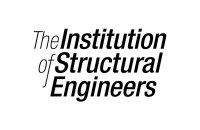Overview:
An entry-level one-day course to cover basic good practice and workmanship to ensure that the finished reinforced concrete element fulfils the Designer's requirements and complies with the Contractor's quality assurance system to reduce the likelihood of non-conformance and the inherent problems associated with them.
Aims & Objectives:
The course will enable delegates to:
- Understand fully the information supplied by the Designer and how to use it effectively
- Have a working knowledge of basic design theory with regard to laps and anchorages
- Confidently check site fixed loose reinforcement against the Designer's requirements
- Avoid common pitfalls when checking Sub-Contractors' work on Site to ensure minimal defects and structural non-conformance issues
- Establish what, if any, problems exist with the reinforcement as fixed with possible solutions
- Apply basic principles to ensure common visual defects are avoided as far as is practicable
On completion of this course, delegates should have:
- A good basic knowledge of the information supplied by the Designer to the Contractor and how to make the best use of it on Site
- Basic design theory in understanding laps and anchorages
- Awareness of proprietary products
- A working knowledge of common problems associated with the fixing and
checking of reinforcement and potential solutions
Course Outline:
- Understanding the Designer's Information
- What reinforcement drawings show and how to read them
- What is the bar call-up / label and what does it tell us
- The bar schedule and its uses in checking on Site
- Basic Design Theory
- Laps and anchorages, what, why and understanding how they are derived (BS 8110)
- Proprietary Products
- Different products and their potential uses on Site with regard to maintaining quality and overcoming the unexpected
- Alternative bar jointing methods
- Cast in inserts and other support / lifting systems
- Concrete
- The essential other half of the combination, maintaining quality
- Admixtures and aggregates
- Checking loose fixed reinforcement on Site against the drawing / schedule
- What is important, what is desirable, and what is not so important
- Common discrepancies between what is drawn and what is fixed
- Designer's "round up and add one"
- Mesh types and the importance of the span direction
- Prefabrication
- Benefits / drawbacks as opposed to Site fixed loose rebar
- Problems
- Work-arounds and options for the commonly occurring problems in fixing loose rebar on Site including: cutting and splicing, loss of continuity, post-drilling and resin fixing
- Water jetting (hydro-demolition) and its potential uses
The day is designed to be an interactive process with continuous delegate feedback / discussion based around individual experience and requirements set against the different topics covered in the Course content.
A simple exercise to determine the delegates' understanding of the course in an informal quiz type exercise may be possible but would depend on the Client's expectation and an understanding on our part of the work undertaken by the Client.
- The confidence, ability and understanding to detail simple RC elements regardless of previous knowledge / experience.
- An overall understanding of where detailing fits within the construction process and the theory behind it.
- An appreciation of flexible good practice detailing and the importance
of error reduction within the completed drawings and schedules.
Intended For:
Any Construction Industry Professionals wishing to gain a basic insight into the Site checking of loose fixed reinforcement. Previous experience in this area is not a pre-requisite.
Ideally, delegates should be conversant with construction site practices








